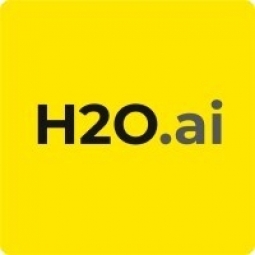公司规模
Large Corporate
地区
- Asia
国家
- Japan
产品
- H2O Driverless AI
- IBM SPSS
技术栈
- Machine Learning
- AI
- R
实施规模
- Enterprise-wide Deployment
影响指标
- Productivity Improvements
- Cost Savings
技术
- 分析与建模 - 机器学习
- 分析与建模 - 预测分析
适用行业
- 零售
适用功能
- 物流运输
- 仓库和库存管理
用例
- 预测性维护
- 车队管理
- 库存管理
服务
- 数据科学服务
关于客户
Senko Group Holdings is a large integrated logistics service provider that operates logistics business as one of their core businesses focusing on apparel and ecommerce in the Tokyo metropolitan area. The company provides services to their contracted customers and works on improving the efficiency of their operations. One of the key challenges they face is securing workers for operations at warehouses due to the current shortage of workers in Japan. In order to maintain the customer service level, the company has been exploring ways to cover part of these tasks.
挑战
Senko Group Holdings, a large integrated logistics service provider, was facing challenges in manpower planning due to the shortage of workers in Japan. The company needed to maintain a high level of customer service despite the inability to cut operational tasks. The logistics staff was burdened with the task of predicting shipment volumes from their warehouses, a task that was time-consuming and complex. The company initially tried using R and IBM SPSS for AI-based shipment volume forecasts, but found them challenging for the logistics staff to use for actual operations. The structure of the model was complicated and required a great deal of effort for creating models as well as for applying feature engineering.
解决方案
Senko Group decided to introduce AI for shipment volume forecasts and chose to use Driverless AI. This AI tool repeatedly performs feature engineering, selects prediction method and performs tuning, delivering highly accurate results without depending on the skill of creating statistical analysis model. The company uses SPSS for data processing and Driverless AI for predictive modelling and prediction output, which help them streamline the operational procedure. The accurate shipment volume forecasts allowed them to plan and allocate workers more efficiently, reducing the workload of logistics staff and improving the efficiency of manpower planning.
运营影响
数量效益

Case Study missing?
Start adding your own!
Register with your work email and create a new case study profile for your business.
相关案例.

Case Study
Improving Production Line Efficiency with Ethernet Micro RTU Controller
Moxa was asked to provide a connectivity solution for one of the world's leading cosmetics companies. This multinational corporation, with retail presence in 130 countries, 23 global braches, and over 66,000 employees, sought to improve the efficiency of their production process by migrating from manual monitoring to an automatic productivity monitoring system. The production line was being monitored by ABB Real-TPI, a factory information system that offers data collection and analysis to improve plant efficiency. Due to software limitations, the customer needed an OPC server and a corresponding I/O solution to collect data from additional sensor devices for the Real-TPI system. The goal is to enable the factory information system to more thoroughly collect data from every corner of the production line. This will improve its ability to measure Overall Equipment Effectiveness (OEE) and translate into increased production efficiencies. System Requirements • Instant status updates while still consuming minimal bandwidth to relieve strain on limited factory networks • Interoperable with ABB Real-TPI • Small form factor appropriate for deployment where space is scarce • Remote software management and configuration to simplify operations

Case Study
Digital Retail Security Solutions
Sennco wanted to help its retail customers increase sales and profits by developing an innovative alarm system as opposed to conventional connected alarms that are permanently tethered to display products. These traditional security systems were cumbersome and intrusive to the customer shopping experience. Additionally, they provided no useful data or analytics.

Case Study
How Sirqul’s IoT Platform is Crafting Carrefour’s New In-Store Experiences
Carrefour Taiwan’s goal is to be completely digital by end of 2018. Out-dated manual methods for analysis and assumptions limited Carrefour’s ability to change the customer experience and were void of real-time decision-making capabilities. Rather than relying solely on sales data, assumptions, and disparate systems, Carrefour Taiwan’s CEO led an initiative to find a connected IoT solution that could give the team the ability to make real-time changes and more informed decisions. Prior to implementing, Carrefour struggled to address their conversion rates and did not have the proper insights into the customer decision-making process nor how to make an immediate impact without losing customer confidence.

Case Study
Ensures Cold Milk in Your Supermarket
As of 2014, AK-Centralen has over 1,500 Danish supermarkets equipped, and utilizes 16 operators, and is open 24 hours a day, 365 days a year. AK-Centralen needed the ability to monitor the cooling alarms from around the country, 24 hours a day, 365 days a year. Each and every time the door to a milk cooler or a freezer does not close properly, an alarm goes off on a computer screen in a control building in southwestern Odense. This type of alarm will go off approximately 140,000 times per year, equating to roughly 400 alarms in a 24-hour period. Should an alarm go off, then there is only a limited amount of time to act before dairy products or frozen pizza must be disposed of, and this type of waste can quickly start to cost a supermarket a great deal of money.

Case Study
Supermarket Energy Savings
The client had previously deployed a one-meter-per-store monitoring program. Given the manner in which energy consumption changes with external temperature, hour of the day, day of week and month of year, a single meter solution lacked the ability to detect the difference between a true problem and a changing store environment. Most importantly, a single meter solution could never identify root cause of energy consumption changes. This approach never reduced the number of truck-rolls or man-hours required to find and resolve issues.








